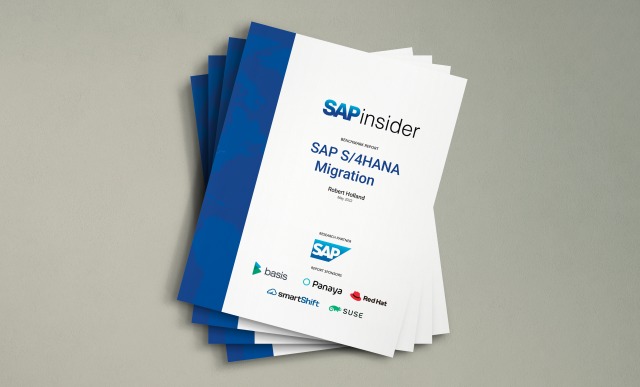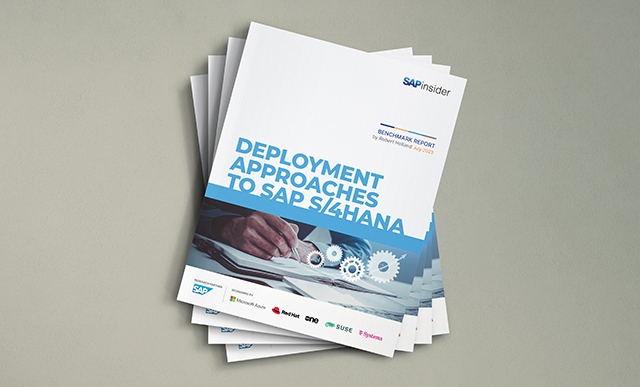Sale of Unit Spurs CCPR’s Move to SAP S/4HANA
By Fred Donovan, Senior Editor, SAPinsider
Following the sale of a subsidiary, Brazil’s largest milk-producing dairy, Cooperativa Central dos Produtores Rurais (CCPR), decided to upgrade to SAP S/4HANA, giving it capabilities for future innovation, such as data analytics and cloud computing.
Founded in 1948, CCPR is the largest Brazilian milk-producing cooperative. It processes and transports more than 90 million liters of milk per month in the provinces of Minas Gerais and Goiás.
In recent years, the company has faced market pressure to diversify its product offerings due to increasing labor and production costs and stagnating milk prices.
CCPR has expanded its business to include animal nutrition products and a retail network. The company recently announced a R$132 million (US$23 million) investment to build a factory to produce animal feed and nutritional supplements in Curvelo, Brazil.
As part of this restructuring effort, CCPR sold one of its subsidiaries. The main company and subsidiary shared the SAP ERP Central Component (ECC) environment and IT infrastructure, explains Daniel Paiva, IT Manager at CCPR.
The 2019 sale required the dairy cooperative to undertake an IT carve-out project to separate the two systems. After completing the the carve-out, CCPR upgraded to SAP S/4HANA and simplifies its IT infrastructure, Paiva says.
Driving CCPR was its need to improve processes for inventory controls for remittances, electronic invoicing, enterprise security, and information availability across the business. It also wanted to support data-driven decision-making with access to real-time data.
The company chose SAP S/4HANA because it satisfied those requirements by providing process automation, data visibility, and robust reporting capabilities. In addition, the platform was configurable to meet Brazilian statutory account and tax compliance requirements.
Updating IT Infrastructure
Updating CCPR’s IT infrastructure was necessary because SAP S/4HANA requires different operating systems and hardware to run the HANA database, Paiva notes.
At the time, CCPR did not have an infrastructure team to handle the transformation. In addition to hiring IT professionals for the team, the company decided to build out its on-premise IT infrastructure and purchase a set of IBM Power systems running the Linux operating system.
“We decided to use on-premise equipment to give the infrastructure team time to develop their expertise. Now the team knows the environment, and we could adopt a cloud solution if that is the direction we want to go. For example, we are currently evaluating RISE with SAP for the future,” Paiva explains.
In addition to SAP S/4HANA, CCPR deployed SAP Analytics Cloud built on the SAP Business Technology Platform (BTP). This enabled integration of a third-party tax compliance product and SAP’s electronic invoicing application that provides financial data to Brazilian authorities and tracks the invoicing of services.
After completing the split of the two companies’ SAP systems and infrastructure in mid-year 2020, CCPR began its system conversion to SAP S/4HANA in August. CCPR carried out the SAP S/4HANA go-live during Christmas vacation in 2020.
Downtime was an important key performance indicator (KPI) for CCPR. “After we went live in December, we had a little downtime, but there was minimal business impact,” Paiva says.
The move to SAP S/4HANA was done relatively quickly because CCPR worked with SAP during the IT carve-out project to prepare the SAP ECC platform for conversion.
As a result of its move to SAP S/4HANA, CCPR was able to automate 80% of invoices for materials, services, and freight, and reduce financial closing time from five days to four days. In addition, it saw a 30% improvement in production processes and stock visibility in distribution centers and a 10% reduction in tax control errors.
With SAP S/4HANA, CCPR has gained access to real-time financial data, strengthened operational governance, and streamlined business processes, helping it better serve customers, employees, communities, suppliers, and investors.
Lessons Learned
Paiva cites several lessons learned from CCPR’s move to SAP S/4HANA.
First, he stresses the need to build a business case for the migration and include business units in the planning and implementation. “Intensive team communication and interaction guaranteed a real engagement of the company,” he says.
“The engagement of the IT team, partner team, and business team is essential for this kind of initiative and the success of the project,” he adds.
Second, he recommends robust risk management and mitigation measures to provide flexibility in carrying out the project.
Third, data management is essential, particularly regarding customer-vendor integration. “This was a big lesson learned because we had an impact on our schedule, and we had to change our baseline and had to do data cleansing work on our database,” he says.
What Does This Mean for SAPinsiders?
- Build a business case and include business units in major IT projects. In SAPinsider’s Benchmark Report, Deployment Approaches for SAP S/4HANA, educating business users and executives on SAP S/4HANA features and benefits was cited by 78% of respondents as an important or very important requirement for moving to the platform. This was even more important for those building the business case for the first time to move to SAP S/4HANA. These results underscore how critical it is to educate these groups about the features and benefits and involve them in the process.
- Use robust risk management and mitigation technologies. According to SAPinsider’s Governance, Risk, and Compliance: State of the Market 2021 report, only 40% of respondents said they are using or implementing risk management technologies. This suggests that more needs to be done to convince organizations to use risk management and mitigation technologies in their IT projects. Risk management and mitigation should be top of mind in your SAP S/4HANA deployment to avoid unexpected problems or successful cyberattacks.
- Prep your system beforehand if you expect to move to SAP S/4HANA in the future. CCPR used the opportunity of a unit sale, which required an IT carve-out project, to move to SAP S/4HANA. If you are involved in a merger, acquisition, or sale of a unit and your ERP system needs to be changed, consider preparing your company and infrastructure to move to SAP S/4HANA.
Company Snapshot
- Cooperativa Central dos Produtores Rurais (CCPR)
- Headquarters: Belo Horizonte, Brazil
- Industry: Consumer Products
- Employees: 800
- Revenue: $481 million
- Company details: CCPR is the largest dairy cooperative in Brazil, consisting of 32 unique cooperatives. Its industry unit produces more than 350 animal nutritional solutions. CCPR’s retail network has 17 units spread throughout the state of Minas Gerais
- SAP solutions: SAP S/4HANA, SAP Analytics Cloud, SAP Business Technology Platform







